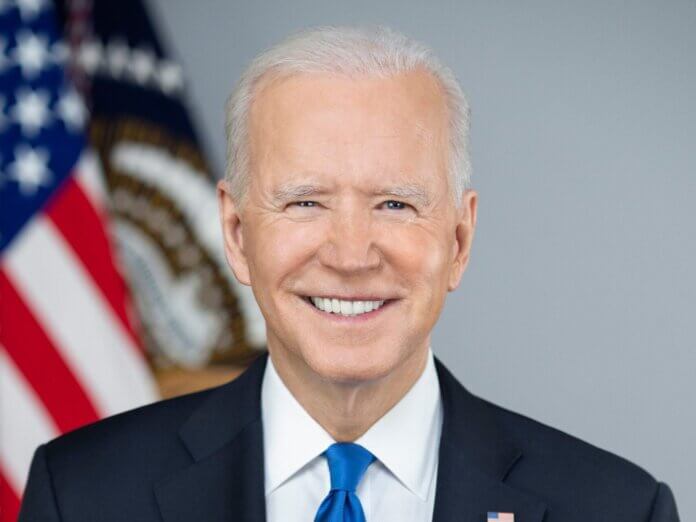View of First Solar’s jet black thin-film PV modules at the site. Image: SJCE / Terra-Gen.
San Jose Clean Energy, a non-profit electricity supplier in California, has celebrated the completion of a solar-plus-storage project which will ensure the delivery of carbon-free electricity during evening peak times.
The supplier held an online press conference on 2 February to officially inaugurate the Kern Solar and Storage Battery Project, which was brought online by developer Terra-Gen on 31 December 2021.
Under a 12-year power purchase agreement (PPA) signed with San Jose Clean Energy, Terra-Gen guarantees that 62MW of energy from the facility will be available to the supplier’s member-customers between 6pm and 10pm each day.
This is the period after solar production has tailed off for the day and evening demand for power from homes and businesses in San Jose, the largest city in Silicon Valley. The city is targeting becoming carbon neutral by 2030, which will make it the US’ first, and SJCE’s 350,000 customer accounts representing about a million people will be a big part of that, city mayor Sam Liccardo said at the press conference.
Liccardo said the 62MW of power is equivalent to about 20% of SJCE’s demand, but more importantly the project addresses the intermittency, or variability, challenge that renewable energy brings to the grid.
In effect, clean energy will be supplied from the project for 16 hours a day, seven days a week, SJCE director Lori Mitchell pointed out. It is also the first project to come online from a US$1 billion investment commitment into four large-scale solar and wind projects by SJCE, one of California’s Community Choice Aggregator (CCA) energy suppliers.
One of the next in that list will be another 100MW project by Terra-Gen, for which the CCA has signed a 15-year PPA, expected to come online during this year.
The Kern project is at the Edwards Air Force Base site in California’s Central Valley, in Kern County where many of the state’s large solar — and wind — farms are located.
Aerial view of the project, built on land leased from Edwards Airforce Base. Leasing revenue will go towards maintaining the base’s mission, Terra-Gen’s Simon Day said. Image: SJCE / Terra-Gen.
Terra-Gen, which will own and operate the project, already has a 2GW wind energy power plant nearby, and the project for SJCE is part of a much larger solar and storage facility it is building at Edwards Airforce Base.
In fact the plant — or rather the vast complex — referred to as the Edwards & Sanborn project, is thought to be the world’s largest combined solar-plus-storage facility to date. Aiming to eventually reach 760MW of PV and 2,445MWh of battery storage, Terra-Gen closed US$804 million financing for its initial 346MWac PV and 1,501MWh of batteries in August last year.
Off-taker deals have been signed with a range of different parties, from corporates like Starbucks to other CCAs and some portions of the project have already been delivering.
Simon Day, VP and head of solar development at Terra-Gen said that for the SJCE deal, the developer built an oversized 118MW solar PV array at the site, as well as additional new battery storage.
It is also able to use other resources such as wind from the company’s portfolio to firm the delivery of clean energy for 16 hours a day, in what he described as a “groundbreaking” arrangement for the solar industry.
Day said the project had been constructed quickly, from permitting in November 2020 to coming online by the end of 2021, using union labour. The solar array was installed by Mortenson Construction, comprising US company First Solar’s thin-film PV modules.
In response to a media question as to why build the clean energy capacity for SJCE in Kern, some 250 miles from San Jose, Simon Day said that Kern’s planning commission is “robust,” and has a “very defined set of rules,” meaning developers like his company are aware of what they need to do to meet local requirements and don’t expect surprise changes to be sprung upon them.
While the power generated and stored will go to SJCE’s members, Kern County residents will also benefit because the solar-plus-storage resources at Edwards Airforce Base will help relieve stress on the grid and can provide additional power to the CAISO grid as needed.
SJCE’s Lori Mitchell noted that Kern County has longer hours of sunshine each day that San Jose, making it economical to site large-scale solar in that area. Mayor Sam Liccardo acknowledged the ongoing regulatory uncertainty over rooftop solar in California, arguing that the state needs a combination of distributed rooftop solar and large-scale solar arrays.
The city hoped regulators at the California Public Utilities Commission (CPUC) would become more supportive of rooftop solar, but if that does not become the case, “you will see many more large arrays,” Liccardo said.
It was also important to note, however, said local community leader Quyen Vuong of Vietnamese-American engagement group ICAN, that the Kern Solar + Storage Battery Project offers the benefits of clean solar energy to renters and those on lower incomes that might not be able to host solar on their own rooftops.
Allowing renters to have a say in improving air quality and supporting cleaner energy is important, Vuong said, because not only are they equally deserving customers, but can become great partners and ambassadors in the community for clean energy.
Continue reading










